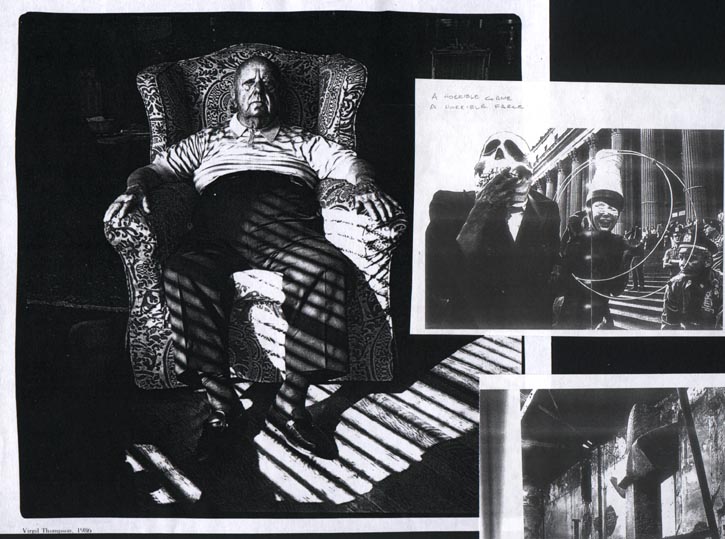

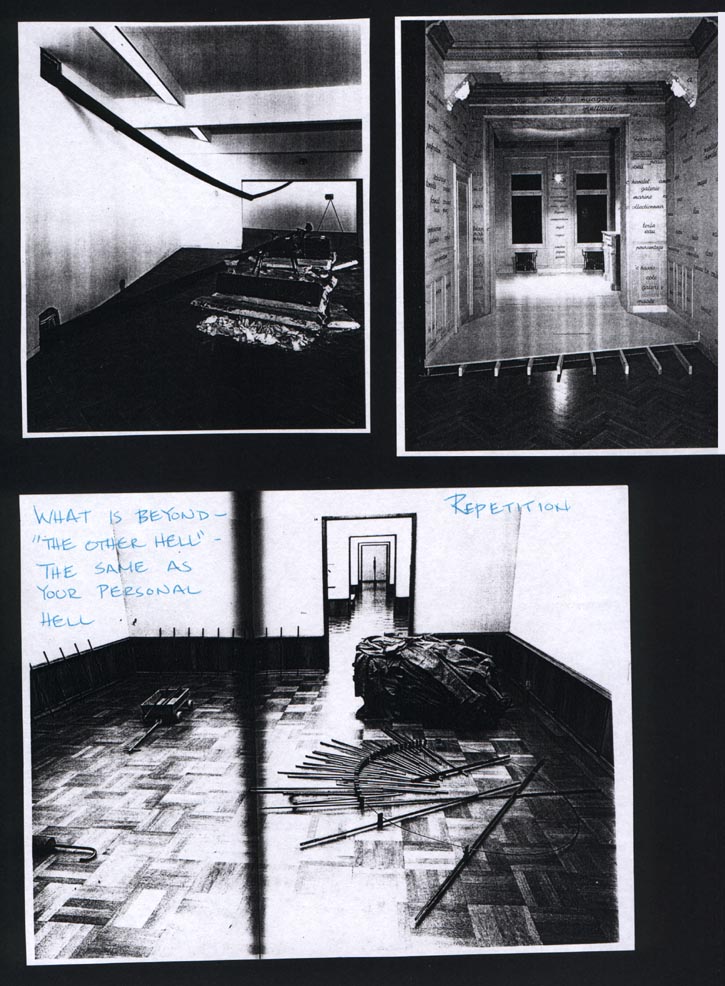
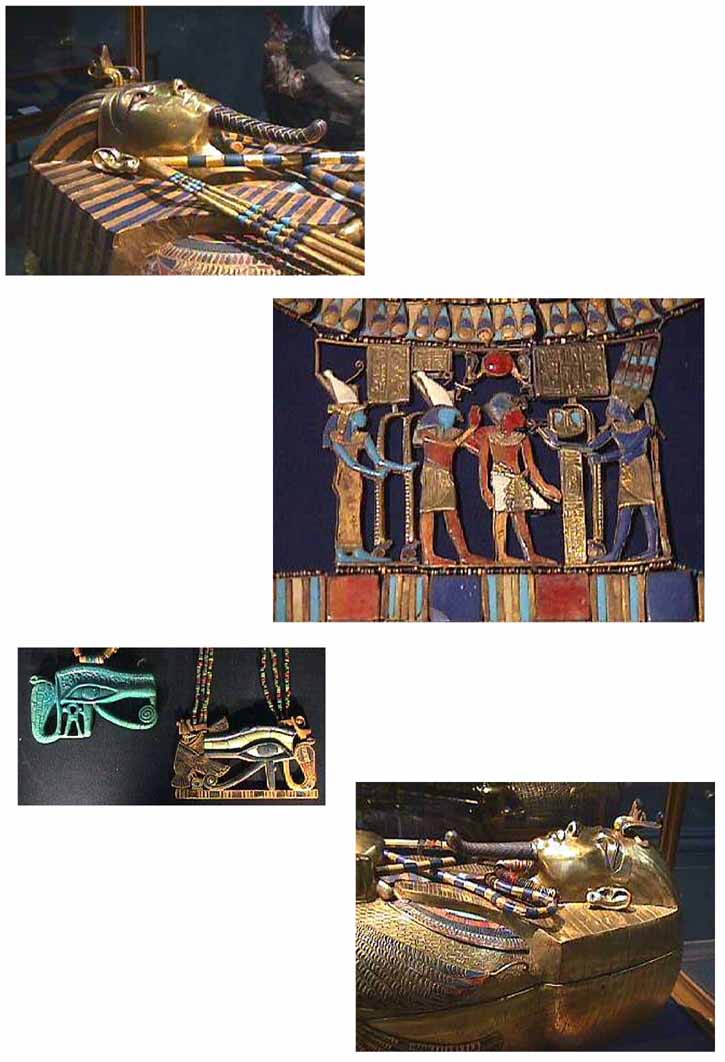
| Northwestern
University Mainstage, Josephine Louis Theatre, April 2000
ENDGAME By Samuel Beckett Directed by Melanie Dreyer |
PAGE INDEX:
The
space evolved out of the tragedy of being entombed before death.
It is a controlled environment, one that is
industrial
and man-made. In Endgame, there is a complete loss of nature, of
what is natural. The space is desolate.
Here,
the only thing you can imagine is the other hell which just happens to
be the same as the hell you are in.
The space has the weight of a heavy burdensome heart, mirroring Hamm's emotional state. He is at rest in his own tomb. It is the tomb of a grand old actor. Here he fulfills his day by performing, painting blank canvases with memories, and jourmaling his experiences. This idea manifests itself in the lettering on the walls.
Both art installations and tombs have informed the design, both being places where precious items are contained. The environment which Beckett describes himself, is meant to do the same.
 |
 |
|
|
|
 |
 |
|
|
|
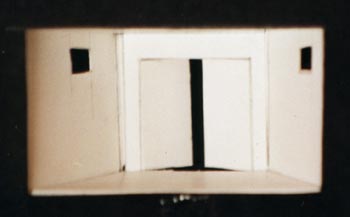 |
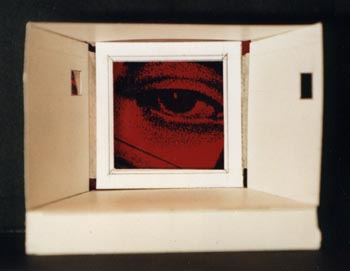 |
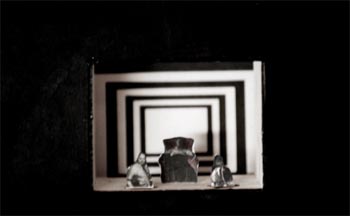 |
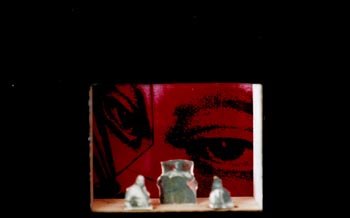 |
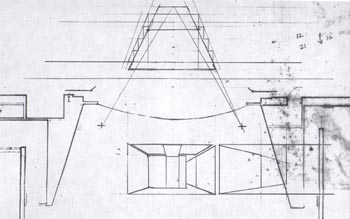 |
 |
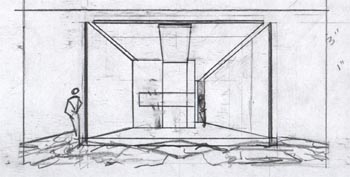 |
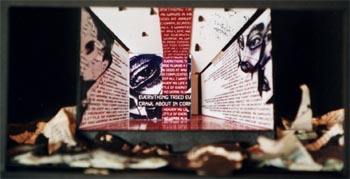 |
 |
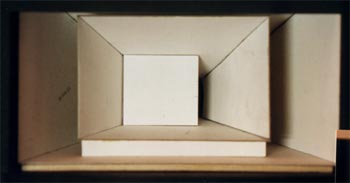 |
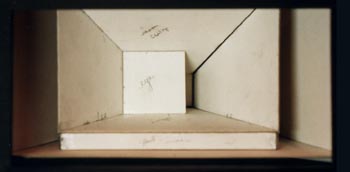 |
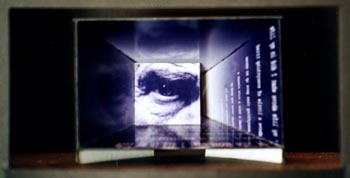 |
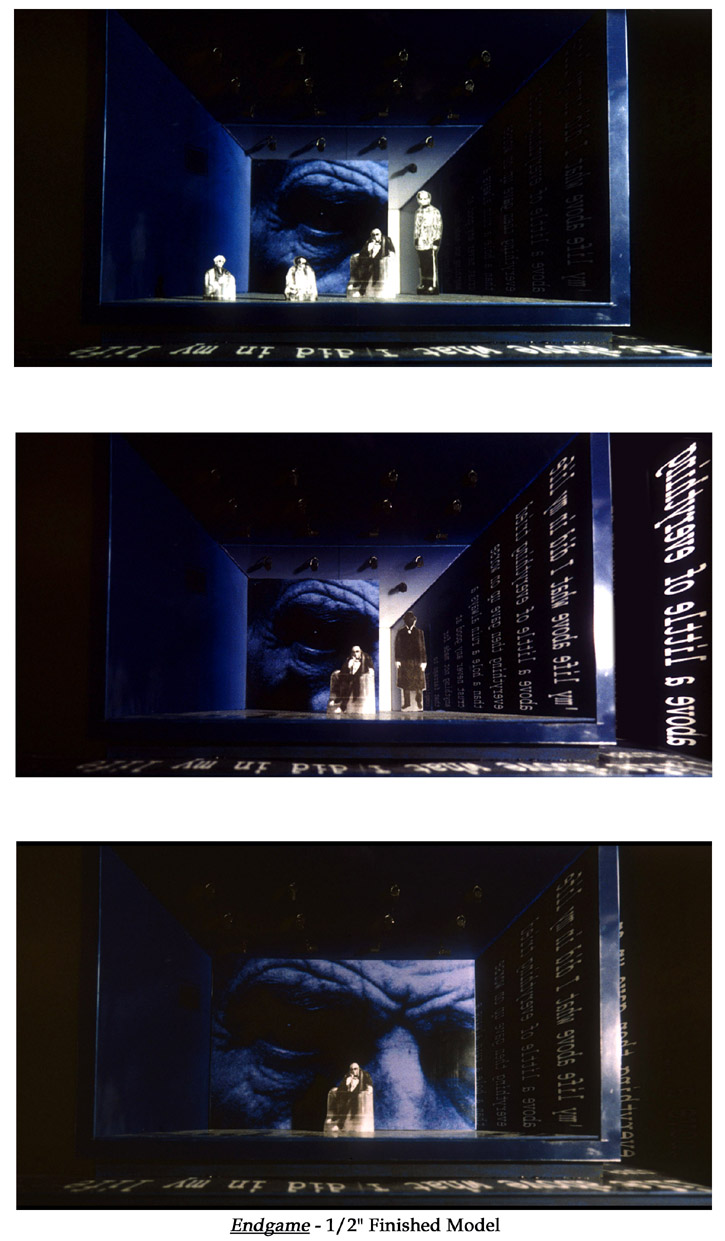 |
 |
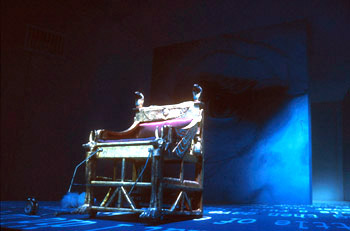 |
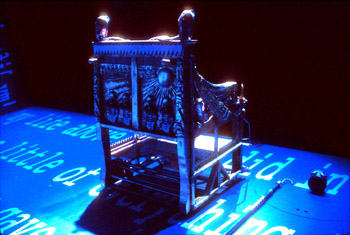 |
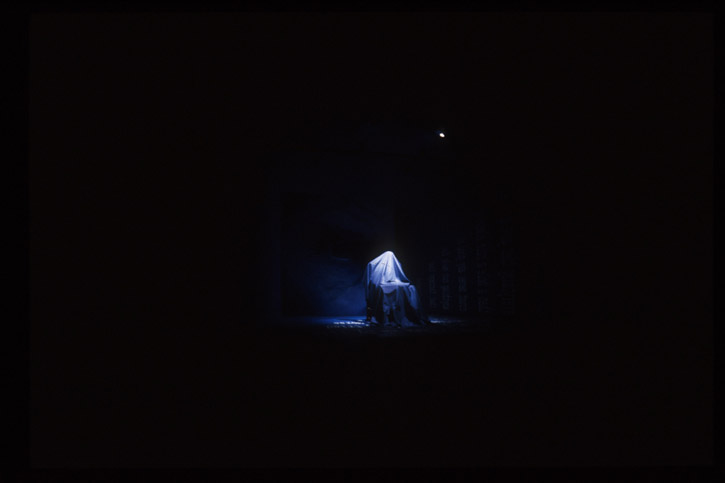 |
 |
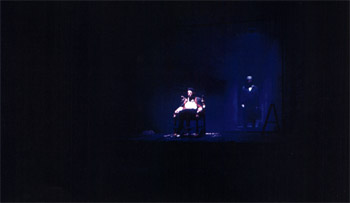 |
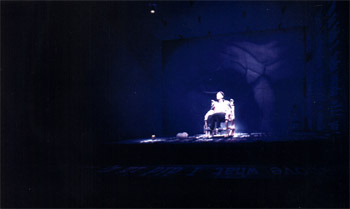 |